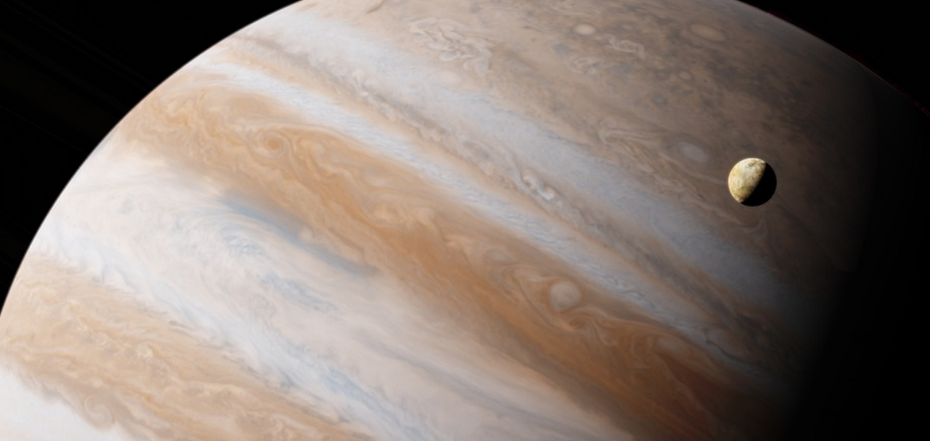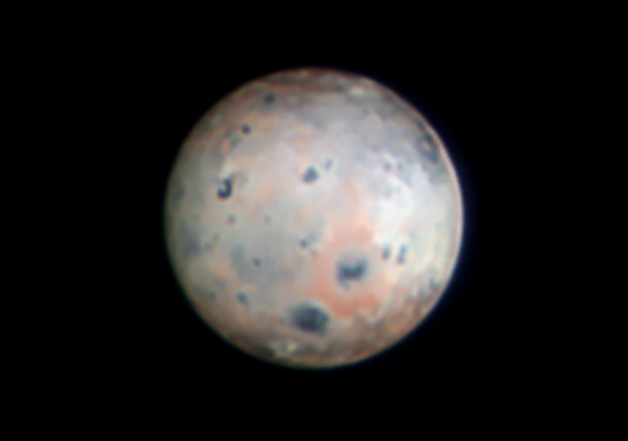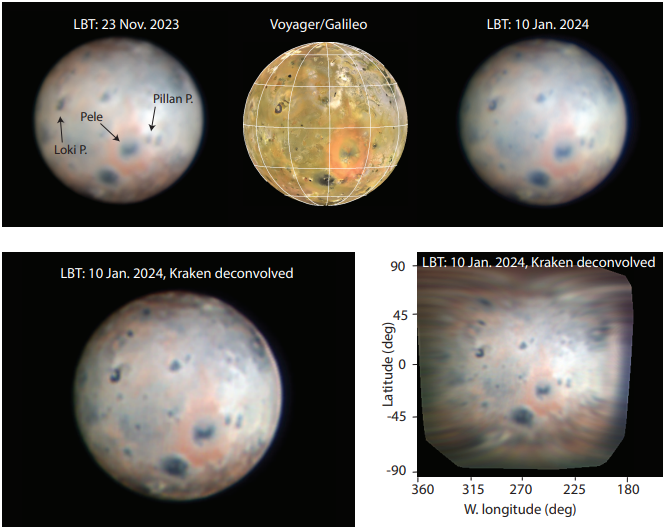News
Telescope captures Jupiter's satellite with the aftermath of a volcanic eruption
The Large Binocular Telescope (LBT), located on Mount Graham in Arizona, has captured an image of Jupiter's moon Io thanks to its resolution, adaptive optics, and sophisticated instruments. This is the highest resolution photo ever taken by a ground-based device.
The image revealed surface features as small as 80 km in size. The spatial resolution was previously reserved for spacecraft. These include NASA's Juno mission, which took some of the most stunning images of Io's volcanoes. These images were captured thanks to LBT's new SHARK-VIS instrument and the telescope's adaptive optical system. In the article "Observation of Io’s Resurfacing via Plume Deposition Using Ground-based Adaptive Optics at Visible Wavelengths with LBT SHARK-VIS", American astrophysicists published images of the space object.
The scientists used the SHARK-VIS camera mounted on the LBT to capture Jupiter's moon Io. This is a high-contrast optical coronagraphic imaging instrument developed and built at the INAF Astronomical Observatory in Rome.
The SHARK-VIS image was so rich in detail that it allowed researchers to identify the area around the Pele volcano, located in the southern hemisphere near the equator (and named after the Hawaiian deity associated with fire and volcanoes). The photo shows the deposition of the plume, which was formed as a result of the eruption of the neighboring Pillan Patera volcano.
NASA's Galileo spacecraft observed a similar sequence of eruptions during its exploration of the Jovian system between 1995 and 2003. However, this was the first time an Earth-based observatory took such detailed images.
Experts saw deposits of dark lava and white sulfur dioxide from the eruption partially covering the red, sulfur-rich deposit. Before SHARK-VIS, it was impossible to observe such surfacing phenomena from the ground.
Jupiter's moon Io in the solar system
Io is the most distant of Jupiter's largest moons (the so-called Galilean moons), which include Europa, Ganymede, and Callisto. Ever since NASA's Voyager 1 spacecraft flew through the Jovian system in 1979, scientists have been fascinated by the moon and its volcanic features.
Together with Europa and Ganymede, Io is in a 1:2:4 orbital resonance. Europa makes two orbits for every orbit of Ganymede, and Io makes four.
Due to the interaction with these satellites and Jupiter's powerful gravity, Io's interior is constantly bending, forming hot lava that erupts through the surface. The telescopes have taken infrared images that have revealed the hot spots caused by the eruptions, but they are not sharp enough to see surface details or identify the locations of the eruptions. By observing eruptions on Io's surface, scientists hope to gain insight into the tidal heating mechanism responsible for Io's intense volcanism.
Only verified information is available on OBOZ.UA Telegram channel and Viber. Do not fall for fakes!






























